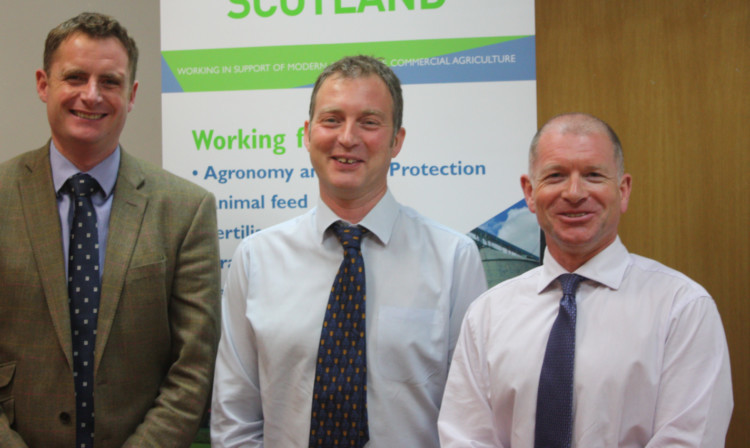Global cereal stock levels are “not particularly comfortable” at the moment, observed Aberdeenshire grain merchant Bruce Ferguson.
Speaking as arable sector chairman in Scotland for trade body Agricultural Industries Confederation he pointed to the weather around the world this summer being absolutely critical, with no room for flood or drought.
World wheat stocks might look sufficient at 170 million tonnes but, with consumption running at two million tonnes per day, there was little room for complacency.
Nearer home he warned that breakthroughs were needed to increase yields.
“I hope we are not stuck at peak performance.
“In the post-war period up to the late 1980s wheat yields increased by 4.5% per annum on average.
“Since then growth has been no better than 1% to 1.5%, so we are effectively on a yield plateau.
“The 10-year mean for wheat is 8.27 tonnes per hectare (t/ha) with the best yields of 8.8t/ha in 2004 and 2005.
“For spring barley the 10-year mean is 5.71 t/ha.
“We really have to look at these figures and see how they can be improved,” said Mr Ferguson.
However, the news was not all bad for Scotland, with this year’s crops looking well at the moment.
“It is a remarkable turnaround in a year.
“Last April there was a lot of re-drilling going on, and although the weather then improved dramatically harvest results were still mixed,” he added.
The second poor wheat harvest in succession had left Scottish buyers relying on imports.
The opposite applied to oats, with a massive 73% increase in tonnage over the year resulting in a market under colossal pressure.
Growers unable to sow their normal quota of winter crops in autumn 2012 had turned to oats in far too big a way.
“The picture is different altogether for the 2014 harvest,” said Mr Ferguson.
“It looks like there will be 110,000 hectares (ha) of wheat to harvest, and this should boost the home-grown tonnage by 39% as yield and area return to normal.”
The spring barley position was also very different.
Last year English growers, as well as Scottish ones, looked to the crop to fill area that should have been sown in winter wheat with the result that the UK planted 900,000ha of the crop, 600,000ha of it in England.
Scottish production alone was up 18% on the year.
This year English growers have returned to winter wheat, with spring barley down to half last year’s level.
Additionally the Scottish area of spring barley is down from 296,000ha to a more normal 272,000ha.
“All of that implies a total spring barley crop in Scotland of 1.55mt.
“If 65% of that or just on 1mt conforms to malting standard the potential surplus is only 109,000t,” said Mr Ferguson.
There was, however, likely to be a significant reduction in barley production in Germany and further east, possibly by as much as 2mt, opening up the possibility of exports of UK barley.
